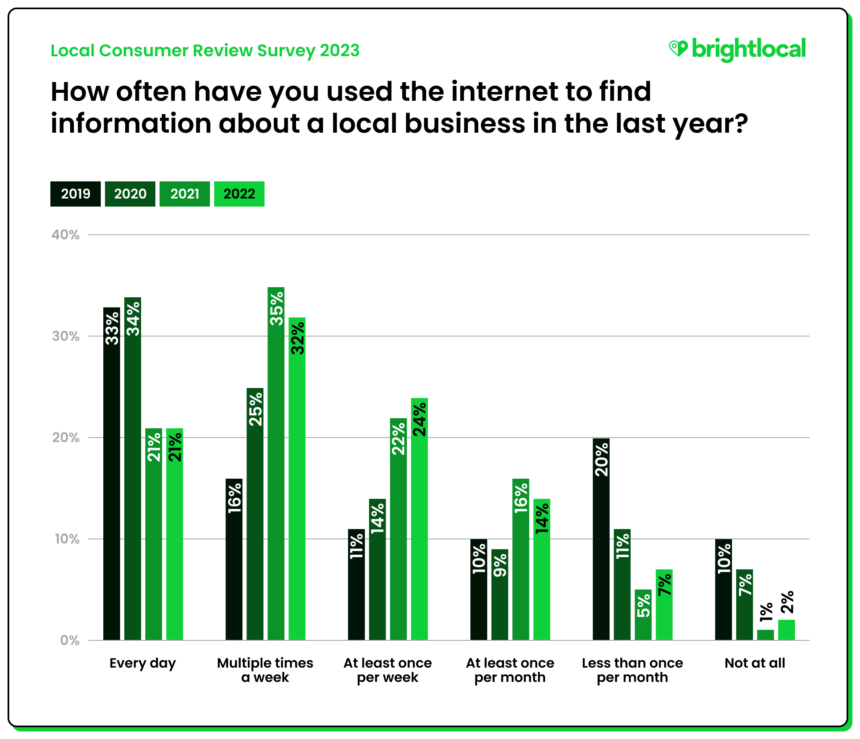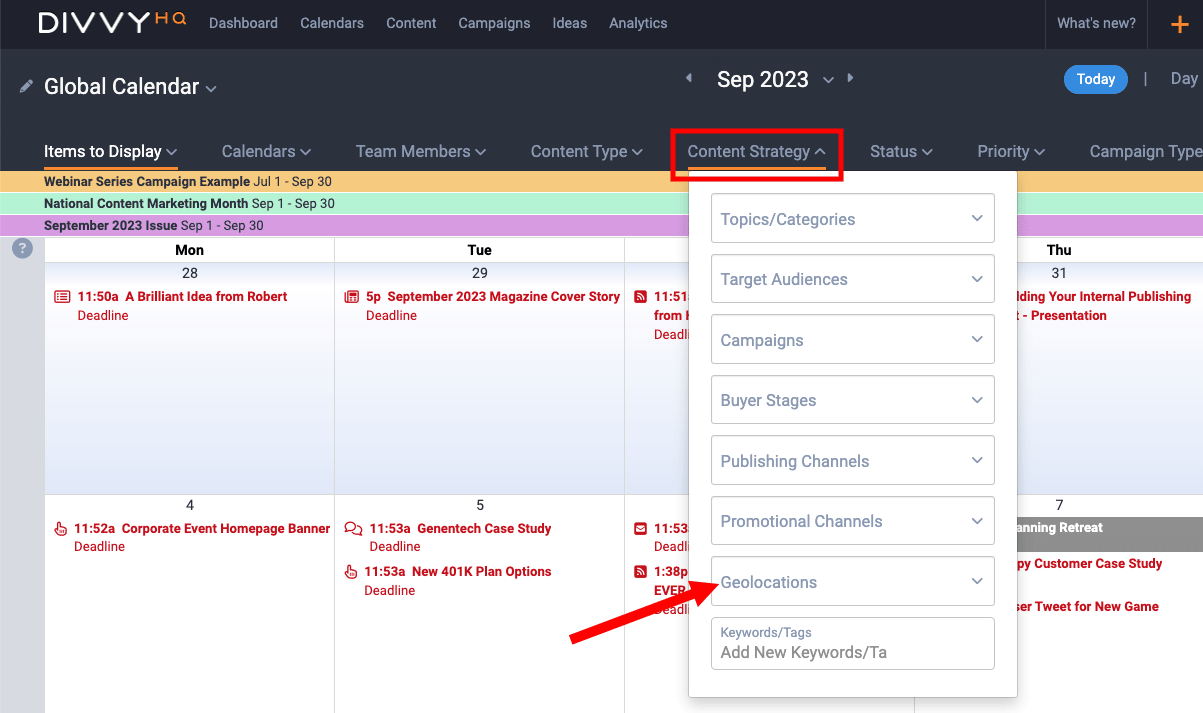An estimated 8.5 billion search queries occur every day on Google alone. Though not all searchers are after the information, products, or services you offer, the competition for your audience is still fierce.
Consider that search engines personalize search results based on numerous factors, including geographic location. Whether you offer products or services globally or locally, tailoring content to meet the specific needs of the people in your business locations helps you attract more visitors and potential customers to your site.
How do you ensure your content appeals to an audience in a specific location? Let’s dig into ways that you can tailor content for a geographic area.
Why Bother With Geolocation Targeting?
Geolocation targeting is necessary if you operate your business in a physical location or provide local services. Your content should focus on consumers in your area.
After all, what good are the resources you spend if you can’t attract an audience that is likely to walk through your doors? Likewise, a plumber in Denver needs to craft content that appeals to people who might need a plumber in the Denver area, even if they are searching for how to unclog a drain.
Targeting your content helps Google’s (and other search engines’) crawlers identify your business as relevant to an audience in the area you offer your goods or services. Additionally, 91% of consumers believe local businesses are trustworthy, potentially making it more likely they’ll click on your page when you show up in the SERP as a local business.
Source: brightlocal
Is geolocation targeting still beneficial if you aren’t a brick-and-mortar store or your audience lives nationwide or globally? Absolutely.
Regardless of how large an area your business serves, geolocation targeting helps you attract more viewers. People in different regions have differing interests, needs, cultural values, and experiences.
Writing content that recognizes and addresses those differences is crucial. You need to demonstrate that you know your audience, and writing about topics of relevance and interest does that.
How Do You Tailor Your Content for a Geographic Location?
Follow these six steps to tailor your content to audiences in specific regions.
1. Do the Research
As with any new marketing approach, prep work is necessary if you want to succeed. The first type of research is finding out where your audience lives. This step requires digging into the data for your existing content.
Don’t worry; when you have Divvy, this step is easy. Our analytics tools pull down the information from across channels and platforms, aggregating it into a single, easily readable report. Use this report to learn where in the world your website traffic comes from.
Once you know the geography, you can research your audience in each region you wish to target. Find out their:
- Interests
- Pain points
- Cultural values
- Behaviors
We recommend creating a customer journey map using your understanding of your target audiences.
2. Segment Your Audience
You’ll then need to segment your audience according to geolocation. Audience segmentation establishes parameters for whom you write your content.
While you might already have audience segments based on other factors, adding geolocation further refines your targeting efforts. For example, if you sell clothing, you might have customer segments based on gender, age, and uses. When you toss location into the mix, you can target content for the season and activities of interest in the area.
DivvyHQ Screenshot – Geolocation field
Divvy’s calendar has geographic audience segmentation features built right into the system. There are filters for all sorts of segment characteristics, including geographic location.
When creating your content, add the appropriate geolocation tag(s). You can then track and schedule content using this feature to ensure you leave no content gaps for a targeted audience and location.
3. Write for Relevance
Creating buyer personas related to geographic locations provides a nuanced understanding of your audience’s varied needs and interests in different parts of the country. Now it’s time to get down to the nitty-gritty and craft content that appeals to individual segments.
Write content relevant to the specific audience, using the language and tone they’re accustomed to and considering cultural influences. Remember, though, that you will still need to maintain your brand’s voice.
Craft content around the topics that interest your audience in the region you are writing for. For example, if you own an auto-mechanic business in the Midwest, writing a blog about how to ensure your vehicle is winter-ready in September might draw a broad audience of young car owners or those who’ve never experienced sub-zero temperatures and don’t know what extreme cold can do to a vehicle.
4. Include Locational Information
When creating your content, include relevant information about the location itself. Talk about the weather or climate if it makes sense for the topic. Mention interesting facts about the population, cultural landmarks, or popular activities in the area when you can weave them naturally into the topic. For example, if targeting a Kansas City market (where DivvyHQ is based), a reference to BBQ will build immediate trust in the reader. 😋
5. Include Location Keywords
Including the keywords that searchers use when seeking information online is good search engine optimization practice in general. If people in New York search for “chiropractor Bronx,” make sure you apply the keyword naturally within your content if you are a chiropractor providing services to people in the Bronx.
Even if you don’t operate in a physical location, you can incorporate location-specific keywords to boost discoverability and SEO. However, keep in mind search intent and don’t stuff your article full of keywords; doing so will do more SEO harm than good.
6. Analyze and Modify
Tailoring content for a geolocation isn’t a one-and-done process. You should assess content performance to determine how well it does with your targeted audience.
When creating content in our system, you can tag your items with identifiers to help you analyze performance for different content types and audience segments in each geolocation. Using these identifiers allows you to find content and quickly assess it, so you can pivot when necessary, or keep on keeping on when your content hits the mark.
How Hard Is It To Tailor Content With Divvy?
Divvy is all about making your life easy, so we ensure the process is as chaos-free as possible when it comes to getting started. Our tools help your team organize, schedule, create, and track content according to geolocation and buyer personas. Request a demo today to see how it works!


